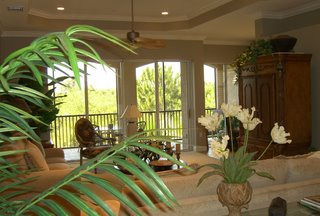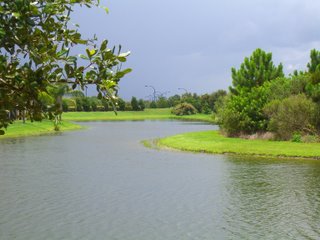
JACKSONVILLE, Fla. – Nov. 21, 2006 – As the 2006 hurricane season tiptoes into history, Floridians are relieved they haven’t had to trade their two-bedroom ranch for a FEMA double-wide.
But even though Mother Nature might have handed homeowners a break, they shouldn’t expect one from their property insurance carrier.
Premiums will continue to levitate thanks to rising reinsurance costs, inadequate competition, and projections of increased hurricane activity, industry insiders say.
Bad news for homeowners already reeling from sticker shock.
Homeowners rates in the First Coast, by one estimate, have more than doubled in the past three years.
“One season is probably not enough to drive the entire marketplace substantially downward,” said Justin Terry, a vice president at insurance broker Harden & Associates. “There are too many other factors driving pricing up and capacity down, including new risk modeling software, rating agency requirements, higher construction costs and continued development in coastal areas.” Ponte Vedra Beach-based insurance agent Chuck Bushong expects premiums to – at best – stabilize at the current high levels.
“If we get additional years of low storms, or no storms like we’ve had this year – pricing could go down,” he said. “But we need more than one year in a row for that to happen.” State Farm spokesman Justin Glover declined to speculate on the direction of insurance premiums next year, but didn’t raise any hopes.
“We look at [hurricanes] over many, many years,” Glover said. “One mild season does not mean that we are back into a cycle of no hurricanes. State Farm’s risk may not have changed.” For the insurance industry, which saw its bottom-line deluged by billions of dollars in claims in the past two years, the ‘06 season is being viewed as a catch-up year.
Hurricane-related losses in the past two years wiped out all profits that State Farm’s Florida subsidiary had earned since Hurricane Andrew struck in 1992, Glover said. After 2004, the subsidiary had to take out a $650 million loan from its Bloomington, Ill.-based parent to pay claims and stay afloat.
Insurers need to make money in the “years the wind doesn’t blow, to be able to pay in the years that it does,” said Jeff Grady, president of the Florida Association of Insurance Agents. “Losses are large when they come, and you gotta have a big bag of money to pay for it.” Dale Eberhardt, who paid more than $2,000 in insurance premiums this year, isn’t buying the industry’s sob story.
The Orange Park retiree’s annual insurance premium spiked 130 percent in the past year. Eberhardt said he hasn’t made a claim on his four-bedroom home in the past 10 years.
“If there’s no claims, why should insurance prices keep on increasing?” the 67-year-old asked. “Now, I’m paying more in [home] insurance than I am paying in [property] taxes.” Eberhardt said he understands insurers need to raise rates to help build back their decimated financial reserves.
But, “if there’s going to be increases, [they should be] reasonable,” he said. “One hundred thirty percent in one year, and then they are going to try to raise it again next year? That doesn’t make a whole lot of sense.” Market forces – not just natural forces – are fueling premium inflation.
In the past three years, at least 25 carriers have scaled back coverage in Northeast Florida, or said they would not write new policies, Bushong said. Such declines in capacity are ratcheting up the rates consumers pay.
What is needed, insurance executives say, is legislative changes to make it easier for insurers to tap into the Florida Hurricane Catastrophe Fund, also known as the CAT fund, a backup reinsurance account that kicks in when insurers lose too much money.
The threshold for CAT fund help is $5.2 billion in losses, and state Chief Financial Officer Tom Gallagher has suggested lowering that threshold to $3 billion.
The insurance industry waves off the 2006 hurricane season as an anomaly. Florida is in the middle of a period of increased hurricane activity – one that is expected to last 10 to 15 years, Bushong said.
El Nino, a periodic warming of Pacific Ocean temperatures, has been credited with providing Florida with a respite.
Typically occurring every two to seven years, an El Nino warming can cause a shift in the jet stream over North America, according to the University of Florida. This shift brings cooler, wetter weather to the Southeastern U.S. during fall and winter months and providing shearing winds that rip hurricanes apart before they hit the coastline.
The main driver of premiums – reinsurance – is also expected to remain high. Insurers buy reinsurance to help offset the cost of paying claims after a major storm or other catastrophe.
“The thing that’s driving the [insurance] rates in Florida is the reinsurance costs,” said Tony Loughman, chief executive officer at Jacksonville-based Southern Oak Insurance Co. “End of story.” Reinsurers claim they are not charging enough to justify the risk the market represents, said Dan Dieterle, a senior vice president at Harden & Associates.
Although reinsurers have “models that would substantiate their position, it’s all speculation,” he said, because of weather’s unpredictability.
State Farm’s Florida subsidiary saw its monthly reinsurance costs more than triple this year to $55 million, compared with the prior year.
Sunshine State Insurance Co. has seen its reinsurance costs more than double in the past year, CEO John Rogan said. The St. Augustine-based property insurer expects another 8 percent to 10 percent increase in its reinsurance costs next year.
Homeowners “should pray for another good year,” Rogan said. “If we get two good years, back-to-back, it may enable reinsurers to take another look at their prices.”
Copyright © 2006 The Florida Verdana,Arial-Union, Jacksonville, Urvaksh Karkaria. Distributed by McClatchy-Tribune Business News.

